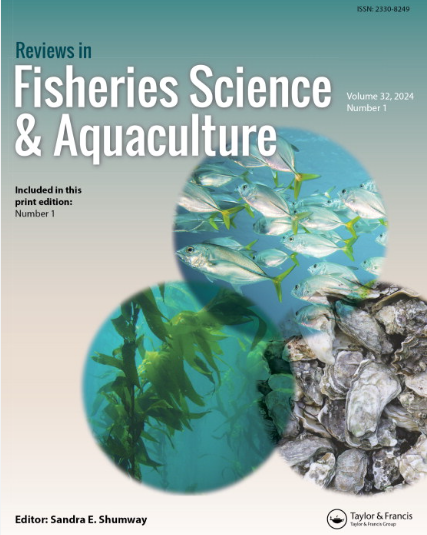Anaerobic Exercise and Recovery: Roles and Implications for Mortality in Pacific Salmon
IF 5.3
1区 农林科学
Q1 FISHERIES
引用次数: 0
Abstract
Abstract Routinely, fish encounter stressors and conditions that require the use of anaerobic exercise, including escaping predators, capturing prey, and interacting with fisheries. Although anaerobic metabolism rapidly yields energy to support locomotion, it also accelerates the depletion of energy stores, and accumulates potentially damaging metabolites, relative to aerobic metabolism. During recovery from intense exercise, animals are vulnerable and may forgo opportunities (e.g., foraging, mating). Recovery is thus likely under strong selection pressure. Despite the fact that recovery is essential for life, relatively little attention has been given to its importance for fitness and survival. Here, the ecology and physiology of recovery following intense exercise are reviewed using Pacific salmon (Oncorhynchus spp.) as a model, though findings are relevant to a wide range of species given that the need for recovery is ubiquitous. Specifically, when and why salmon use anaerobic exercise across their lifecycle, the physiological consequences of this extreme exercise, and the recovery process are considered. The importance of considering recovery for effective management and conservation of Pacific salmon species is discussed, and examples to highlight meaningful ways in which knowledge of recovery can be applied to problems facing fish are provided, with implications widely applicable to all fishes. Given current and projected climate scenarios, understanding the role of temperature in recovery will become progressively more important, and should be an explicit consideration when assessing vulnerability.无氧运动和恢复:太平洋鲑鱼死亡率的作用和意义
通常,鱼类会遇到需要使用无氧运动的压力源和条件,包括逃离捕食者,捕获猎物以及与渔业相互作用。尽管无氧代谢迅速产生能量以支持运动,但与有氧代谢相比,它也加速了能量储存的消耗,并积累了潜在的有害代谢物。在剧烈运动后的恢复过程中,动物很脆弱,可能会放弃机会(例如觅食、交配)。因此,在强大的选择压力下,复苏是可能的。尽管事实是恢复对生命至关重要,但相对而言,人们很少注意到它对健康和生存的重要性。本文以太平洋鲑鱼(Oncorhynchus spp.)为模型,综述了剧烈运动后恢复的生态学和生理学,尽管这些发现与广泛的物种相关,因为恢复的需求是普遍存在的。具体来说,鲑鱼在其整个生命周期中何时以及为什么进行无氧运动,这种极端运动的生理后果以及恢复过程都被考虑在内。讨论了考虑恢复对有效管理和保护太平洋鲑鱼物种的重要性,并举例强调了将恢复知识应用于鱼类面临的问题的有意义的方法,其影响广泛适用于所有鱼类。鉴于当前和预计的气候情景,了解温度在恢复中的作用将变得越来越重要,在评估脆弱性时应明确考虑这一点。
本文章由计算机程序翻译,如有差异,请以英文原文为准。
求助全文
约1分钟内获得全文
求助全文
来源期刊

Reviews in Fisheries Science & Aquaculture
FISHERIES-
CiteScore
25.20
自引率
0.90%
发文量
19
期刊介绍:
Reviews in Fisheries Science & Aquaculture provides an important forum for the publication of up-to-date reviews covering a broad range of subject areas including management, aquaculture, taxonomy, behavior, stock identification, genetics, nutrition, and physiology. Issues concerning finfish and aquatic invertebrates prized for their economic or recreational importance, their value as indicators of environmental health, or their natural beauty are addressed. An important resource that keeps you apprised of the latest changes in the field, each issue of Reviews in Fisheries Science & Aquaculture presents useful information to fisheries and aquaculture scientists in academia, state and federal natural resources agencies, and the private sector.
 求助内容:
求助内容: 应助结果提醒方式:
应助结果提醒方式:


